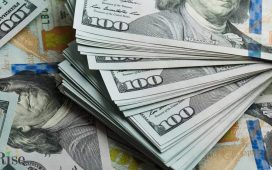
Investing.com – Gold prices held above the key mid-$1,900 level on Thursday but dipped slightly after a higher reading for inflation that sparked concerns about Fed rate hikes — even as forecasts showed a potentially sharp decline in U.S. job numbers for August.
Economists are expecting for last month to be just 170,000 higher than July’s addition of 187,000 — marking the smallest monthly expansion in jobs since February 2021. The Federal Reserve is watching all data on U.S. jobs, as well as wages, like a hawk to determine their impact on inflation and how that could influence its forthcoming decision on interest rates on Sept. 20.
A separate reading on inflation, called the Personal Consumption Expenditures, or , Index, released on Thursday showed a 3.3% expansion in the year to July — slipping further from the Fed’’s annual 2% target. That led to concerns that the central bank would not waver much from its hawkish stance and weighed on gold.
At Thursday’s settlement, gold futures’ most-active on New York’s Comex settled at $1,965.90 per ounce, down $7.10, or 0.4%, on the day. It hit a five-week high of $1,977.05 in Wednesday’s session. For all of August, gold settled down 2%.
The spot price of gold, which is more closely followed than futures by some traders, slid by $1.85, or 0.1%, to $1,940.56 an ounce by 16:05 ET (20:05 GMT). Reflective of real-time trades in bullion, hit a four-week high of $1,949.05 on Wednesday. For August, it lost 1.2%.
“Gold has been buoyed in recent days by the US data we’ve seen, particularly the (jobs) figures which, if combined with a weak report tomorrow, could strongly point to cracks appearing in the labor market,” said Craig Erlam, analyst at online trading platform OANDA.
“We’re not talking about anything too substantial at this point but certainly less heat which the Fed will be comforted by, potentially enough to pause again in a few weeks,” Erlam said, referring to the Sept. 20 decision on interest rates by the central bank.
Inflation has retreated significantly in the United States after the Fed resorted over the past 18 months to one of the most aggressive monetary tightening in its history to runaway inflation caused by the coronavirus pandemic and the trillions of dollars of relief spending related to that.
Since March 2020, the central bank has added a total of 5.25% to key lending rates which previously stood at just 0.25%. As a result, inflation measured by the CPI, has tumbled from an annualized four-decade high of 9.1% in June 2022.
Despite that, the Fed has not been able to easily move key inflation markers back to the 2% and below levels it had maintained before the pandemic. The reason, the central bank says, is stronger-than-expected growth in jobs and wages since the COVID-19 outbreak that have allowed Americans to continue spending robustly.
(Ambar Warrick contributed to this item)









